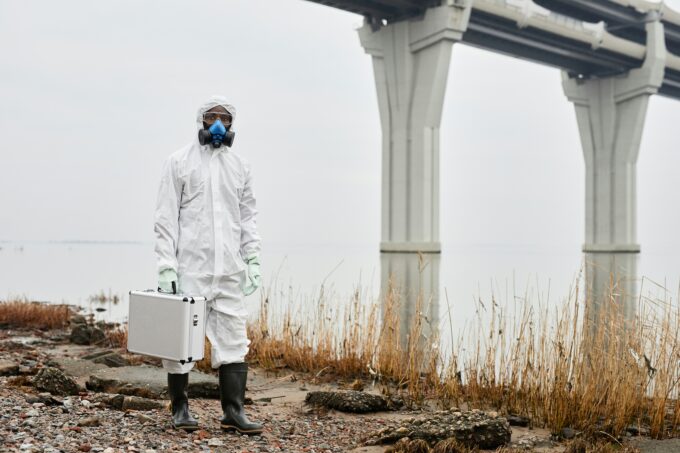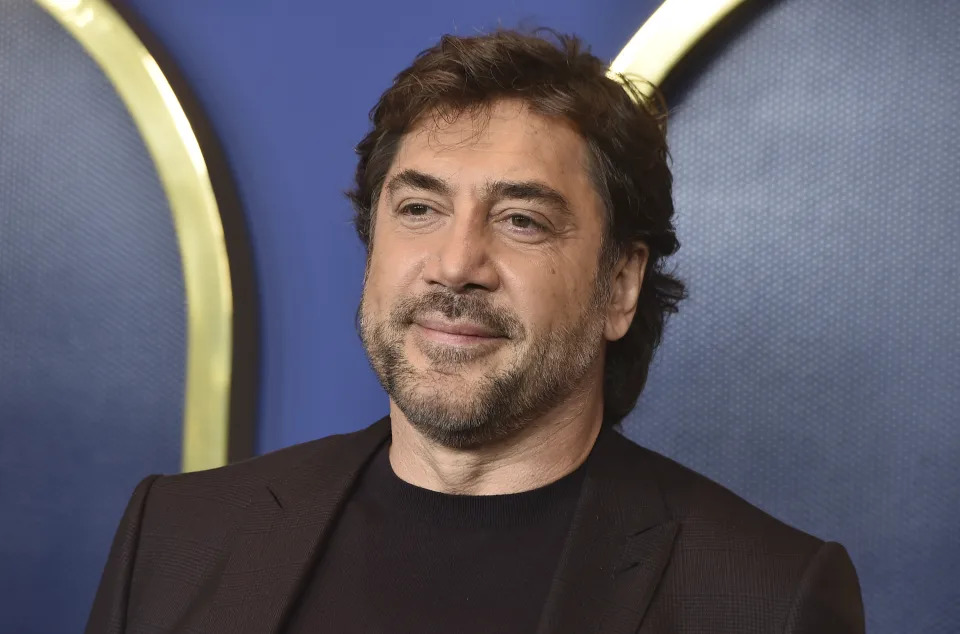
Photo by Unsplash+ and Getty Images.
Fukushima Daiichi Nuclear Power Plant is the world’s leading epicenter of toxic radioactive water released into the ocean. Yet, these activities are no longer closely monitored by mainstream media. As it happens, Tokyo Electric Power Company is the electric utility that manages the decommissioning of the collapsed nuclear reactors. This controversial ongoing release of radioactive water is mostly unopposed by the nations of the world. No problem, dump it!
But there is another side to this story.
“This is a time bomb.” (Robert Richmond, Ph.D. Kewalo Marine Laboratory)
A nationwide symposium on Zoom entitled: Radioactive Contamination of US Food and Water and What Congress Can Do About It, August 15, 2024, discussed several aspects of Fukushima’s dumping scheme. The details are disturbing and maybe horrifying.
Tokyo Electric Power Company (“TEPCO”) with the blessing of the government of Japan commenced dumping treated radioactive water into the ocean August 24th, 2023. Since 2011, TEPCO has been wrestling with one of the most recognizable industrial accidents in human history, three nuclear power plants still in a difficult to define meltdown thirteen (13) years after the initial meltdown.
It’s important to note that subsequent to the meltdown in March 2021 five ex-Japan prime ministers called for an end to nuclear power. In sharp contrast to those five former PM’s opposition, as of August 2022, current PM Fumio Kishida (2021 -) went all-in for nuclear power reactors, build, build, build.
Beginning in 2023 TEPCO commenced dumping treated radioactive water used to cool sizzling hot highly radioactive corium within the core of the crumpled reactors into the Pacific Ocean. Essentially, TEPCO unofficially christened the ocean “an open sewer.” It’s free! Yes, it’s free but not free for abuse. And why would anyone authorize broken-down crippled nuclear power plants to release toxic radioactive wastewater into the ocean?
According to TEPCO and several experts quoted in a BBC article, the low level of tritium radiation released is acceptable risk. One expert said he’d drink it. Well, can somebody please arrange for him to receive a supply of TEPCO’s radioactive wastewater to drink for one year. That’d be comparable to the ocean’s experience of one year. According to Emily Hammond, Ph. D., an expert in energy and environmental law with George Washington University: “The challenge with radionuclides (such as tritium) is that they present a question that science cannot fully answer; that is, at very low levels of exposure, what can be counted as ‘safe’? (Source: The Science Behind the Fukushima Waste Water Release, BBC, August 25, 2023)
But seriously, are there really, truly tolerable levels? According to the National Academy of Sciences, there are no safe doses of radiation. “Decades of research show clearly that any dose of radiation increases an individual’s risk for the development of cancer.”
TEPCO’s dumping is a testament to human frailty, not strength, endangering its own, and it’s difficult to stomach. There’s nothing positive about it, not one positive. Instead, it’s a boldfaced insult and slap in the face. Intuitively, logically, ethically, it’s impossible to justify turning the world’s oceans into open sewers. Oh, please!
The International Atomic Energy Administration (IAEA) greeted the TEPCO/Japan government dumping scheme with open arms, as did the G7. But, in the process, IAEA violated its own stated principles, see: TEPCO’s ALPS-Treated Radioactive Water Dumping Plan Violated Essential Provisions of IAEA’s General Safety Guide N0. 8.
Indeed, IAEA’s endorsement begs a critical question of whom the public can trust when the IAEA overstates well-known facts about the dangers of tritium while violating its own policies for nuclear safety.
The July 15th symposium discusses the risks of Fukushima that are generally ignored by society at large. Some highlights of that exposé follow:
Arjun Makhijani, Ph.D. Institute for Energy and Environmental Research. Focus on tritium, Exploring Tritium Dangers to Protect Future Generations and Ecosystems, Congressional Briefing, 2024-07-15:
Tritium found in Fukushima’s wastewater, when exposed in humans is detrimental to the basic core of a person’s internal energy system, aka: the mitochondrial DNA, a bodily function that allows people to walk to talk to blink to process food, etc. This significant aspect of human DNA is very susceptible to damage by tritium. And the risk is identical for plants and animals.
A little tritium goes a long way. One teaspoon of tritiated water can contaminate 100 billion gallons of water (equivalent to 150,000 Olympic pools), a calculation that is based upon US drinking water standards. “Tritium turns water radioactive, so our most crucial ‘stuff of life’ becomes radioactive.” How many teaspoons will Fukushima produce?
The risks of internal exposure to tritium: “There’s clear evidence of neurological damage, according to the International Commission on Radiological Protection.”
Congress needs to address tighter regulations of tritium exposure for both humans and ecosystems.
Robert Richmond, research professor Kewalo Marine Laboratory, University of Hawaii, Achieving Healthier Oceans and People, Dumping of Nuclear Waste Undercuts Progress: A marine biologist viewpoint.
Already, the state of the ocean is in serious decline because of anthropogenic stressors. We need to reduce stressors, not add radionuclides to a very fragile marine ecosystem. Radionuclide effects are transboundary and transgenerational issues in addition to the complication of PFAS or “forever chemicals” starting to show up in alarming quantities. Compounding these dangers, the Fukushima discharge program will take 30+ years.
Fukushima’s discharge, according to Richmond: “This is a time bomb… Once the radionuclides are detected in fish, it will be too late to act. There’s no way to put the genie back in the bottle.”
The way the plumes of radionuclides are modeled for Fukushima dumping, they’ll reside in major Pacific fishing grounds for 7-12 years at peak levels of impact. Tritium is not evenly distributed throughout the ocean. Statements that tritium will be widely dispersed/diluted do not hold up at all. Tritium ends up in fish that people eat, bio-accumulating within human bodies that have no defenses against organically bound tritium.
(Footnote: As tritium moves up the food chain it bioconcentrates and biomagnifies. Pro-nuclear advocates claim tritium passes thru the body within days, no harm done. This is not true. It bioaccumulates in living organisms. Numerous studies have proven this, e.g., Benedict C. Jaeschke, et al, Bioaccumulation of Tritiated Water and Trophic Transfer, etc. National Library of Medicine, January 2013.)
Additionally, “the Fukushima discharges violate numerous international protocols and established principles (1) the Precautionary Principle, and IAEA GSG-8 (2) ALARA principle – nobody should be exposed to radiation unless it is as treatment for cancer (3) UNCLOS (4) London Convention and Protocol (5) the newly passed High Seas Treaty (6) PIF 2050 Blue Continent Strategy (7) the spirit of the UN Ocean Decade.” Fukushima dumping violates all seven of these internationally recognized principles against dumping toxic substances into the world’s oceans.
Why is Fukushima given a pass on seven (7) internationally recognized violations?
Accordingly, new approaches and alternatives and regulations for toxic ocean dumping must be researched and established. Congress needs to address this as soon as possible.
James Gormley – Editor-in-Chief, Better Nutrition magazine, award-winning journalist, pioneer of science-centered coverage and a member of the US trade delegations in Paris and Rome for FAO/WHO Codex Alimentarius.
A multinational approach is required for assessment and radioactivity mitigation. We need a “whole-of-government approach” in the US inclusive of EPA, NOA, DOE, FDA, and Fish and Wildlife Service all-in tackling issues such as Fukushima’s radioactive ocean dumping. Congress needs to bring all federal assets together in unison to tackle this understudied and largely ignored risk to marine and human health.
Kimberly Roberson – Founder and executive director Fukushima Fallout Awareness Network (“FFAN”) est. June 2011.
A citizen’s petition regarding the risks associated with Fukushima was filed with the FDA on behalf of FFAN in 2013. Even though the FDA is required to respond to a citizen’s petition, to date, 11 years later, the only response has been a letter stating: “More time was needed.”
Meanwhile, according to Roberson: “TEPCO struggles to get Fukushima under control, and there is no end in sight. They say it will take 30 or 40 years, but nobody really knows for sure. In August of 2023, TEPCO began systematically dumping radioactive wastewater into the Pacific, but it is only partially filtered. TEPCO filled over 1,000 tanks with wastewater, and more water is added every day, and there are hundreds of thousands of gallons contained in each tank… tritium is difficult to filter, and TEPCO is not currently attempting to filter it. Cesium is the radionuclide at the center of the FDA petition… where one radionuclide is detected, others are found as well.” (Footnote: High levels of radioactive cesium cause nausea, vomiting, bleeding, coma, and death.)
At present the US has the highest levels allowable for manmade radiation from nuclear accidents at 1200 Bq/kg for all citizens. By comparison, Japan’s allowable level for adults is 100 Bg/kg and 50 Bg/kg for children.
“Food that is too radioactive for Japan can legally be exported to the US…. It has been reported that food, including seafood, that Japan would ordinarily export to countries that have instituted food bans of Japan’s radioactive food products is now being sold and served to US military service members and their families in Japan. The National Academy for Sciences biologic effect of ionizing radiation states there is a linear relationship between ionizing radiation and the development of solid cancers.” (Roberson)
(Footnote: Because ionizing radiation has enough energy to break an electron away from an atom, it certainly has enough umph to change the chemical composition of any material it connects with. A human body is defenseless.)
The FDA should monitor for cesium in foodstuff, as stated in the FFAN petition. Additionally, food imported from Japan should adhere, at the least, to Japan’s own standards of 100 Bg/kg for adults and 50 Bg/kg for young children before export to the United States.
The International Physicians for the Prevention of Nuclear War in Germany suggest 8 Bg/kg for children and 16 Bg/kg for adults as safe tolerable levels.
Congress should start the process to establish adequate testing and establish a viable limit.and verification that food imported from Japan does not exceed Japan’s own restrictions. Other nations have banned Japan’s exports.
The public has a right to information. FFAN is asking Congress to direct the FDA to do its job. It’s in the public interest to know what people are putting in their mouths. If imported foodstuff exceeds Bg/kg limits set by the exporter in Japan, the public should be informed that they are purchasing food from Japan that exceeds Japan’s allowable levels of radioactivity for its own people.
“The myth is being perpetuated that discharges are necessary for decommissioning. But the Japanese government itself admits there is sufficient water storage space in Fukushima Daiichi. Long-term storage would expose the current government decommissioning roadmap as flawed, but that is exactly what needs to happen. The Fukushima Daiichi nuclear station is still in crisis, posing unique and severe hazards, and there is no credible plan for its decommissioning,” Shaun Burnie, Senior Nuclear Specialist at Greenpeace East Asia.
As for Fukushima discharges, Greenpeace claims that the radiological risks have not been fully assessed, and the biological impacts of tritium, carbon-14, strontium-90 and iodine-129 – to be released with the water – “have been ignored”. (Source: Fukushima: Why is Japan Releasing water and is it Safe? Reuters, Aug. 24, 2023) That statement should be a gamechanger, but most likely it won’t.







